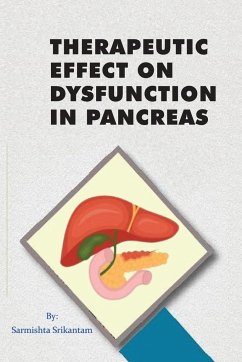Pancreas is a long and slender glandular organ located behind the stomach, in the retroperitoneal space. The recorded average weight of adult human pancreas is about 100 g and is approximately 14-25cm in length. Pancreas is a heterocrine gland, and it holds both exocrine and endocrine tissue along with pancreatic ductal cells. Exocrine pancreas is structurally similar to salivary glands and has acinar cells with many zymogen granules, which constitute nearly 85% of the pancreas. These zymogen granules contain precursors of the pancreatic enzymes responsible for the digestion of major dietary components. The pancreatic peptidases trypsin, chymotrypsin, and carboxypeptidase A and B and lipases hydrolyse dietary proteins and triglycerides respectively. All these secretions were controlled by neural and hormonal mechanisms. When food reaches the duodenum, enteroendocrine cells release the hormones secretin and cholecystokinin into the bloodstream. These hormones stimulate the pancreas to produce large amounts of water, bicarbonate; digestive enzymes amylase and lipase; zymogens trypsinogen, chymotrypsinogen, proelastase and procarboxypeptidase.
Hinweis: Dieser Artikel kann nur an eine deutsche Lieferadresse ausgeliefert werden.
Hinweis: Dieser Artikel kann nur an eine deutsche Lieferadresse ausgeliefert werden.








